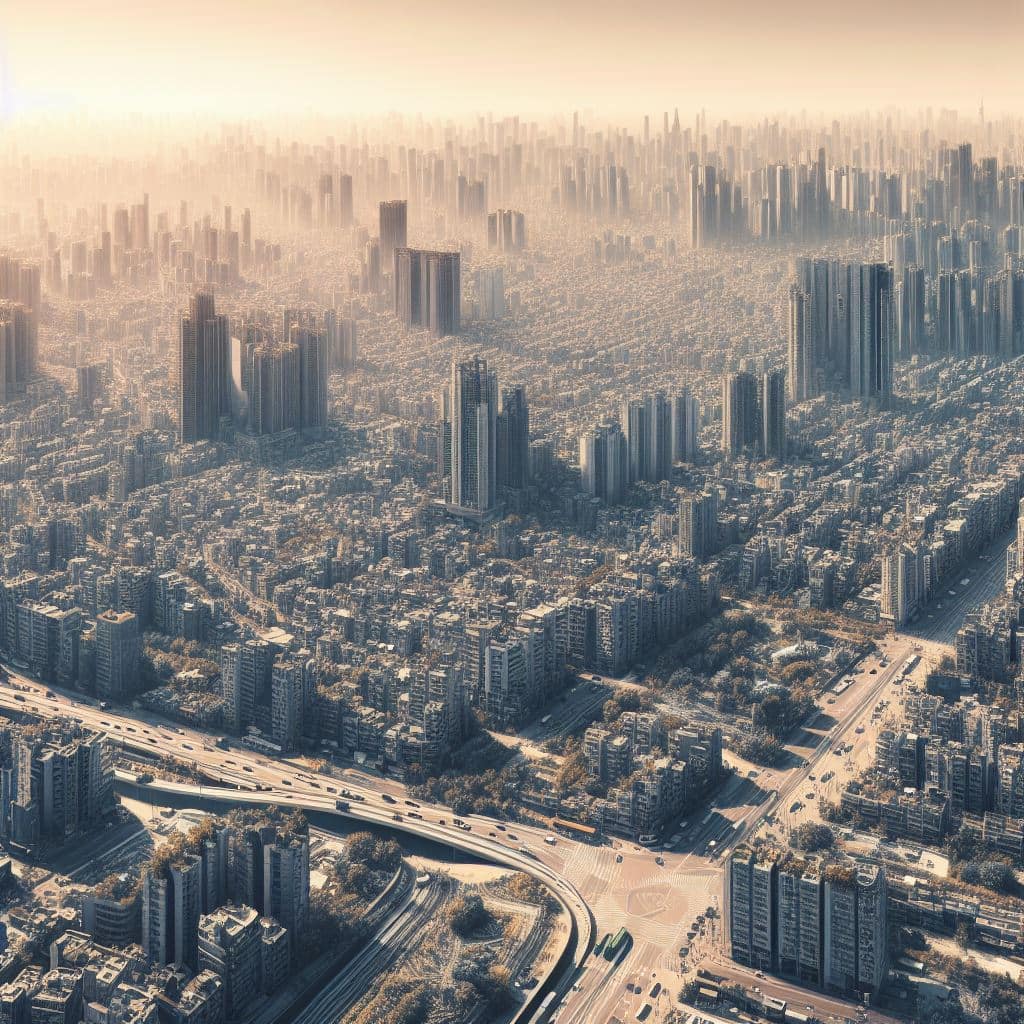Understanding the Heat Island Effect in Metropolitan Areas
As the planet grapples with the pressing issue of climate change, urban centers have become the focal point of a unique environmental phenomenon: Urban Heat Islands (UHIs). This intensifying occurrence within the concrete jungles highlights the ever-growing imperative for sustainable urban planning and climate-adaptive cities in our warming world.
What Are Urban Heat Islands?
Urban Heat Islands are metropolitan areas that are significantly warmer than their rural surroundings due to human activities. This disparity is not a mere few fractions of a degree but a notable increase that can affect the quality of city life, public health, and the local ecosystems. The term “Heat Islands” aptly paints the picture of cities as isolated pockets of elevated temperatures, contrasting with the cooler ‘ocean’ of the less developed and often greener territories that fringe them.
The Mechanics behind Urban Heat Islands
The mechanics of how UHIs develop is a testimony to unintended human influence on nature. Essentially, UHI arises from the extensive prevalence of asphalt, concrete, buildings, and other infrastructures that absorb and re-emit the sun’s heat more than natural landscapes such as forests and bodies of water. Several factors contribute to the UHI effect:
- Albedo Effect: Urban materials often have lower albedo, meaning they absorb more solar radiation.
- Waste Heat: Energy consumption in cities releases substantial amounts of waste heat.
- Greenery Loss: Reduced vegetation due to urbanization leads to less shade and moisture from plants that usually cool the environment.
- Airflow Disruption: The layout of buildings in cities can reduce wind speed, decreasing the dispersion of heat.
The Impact of Urban Heat Islands
The implications of heat islands are far-reaching, affecting not only environmental sustainability but also touching upon economic and public health dimensions.
- Public Health: Higher temperatures can lead to heat stress, exhaustion, and in severe cases, heatstroke. Vulnerable populations like the elderly, children, and those with pre-existing health conditions are especially at risk.
- Energy Demand: As temperatures rise, the need for air conditioning and refrigeration skyrockets, placing increased demand on energy resources and contributing further to the UHI effect.
- Water Quality: Elevated temperatures can affect water quality by increasing the rate of chemical reactions that result in pollutants and lowering oxygen levels in water bodies, harmful to aquatic life.
- Ecosystems: Native species may struggle or be unable to survive the altered conditions, potentially disrupting local ecosystems and biodiversity.

Mitigating the Heat Island Phenomenon
Combating the UHI effect necessitates a multifaceted approach involving urban design, policy initiatives, and community action. Let’s explore some solutions that are paving the way for cooler cities:
- Green Roofs and Walls: Implementing vegetation on rooftops and vertical spaces can absorb heat, provide insulation, and improve aesthetics.
- Urban Forestry: Expanding urban tree canopy not only offers shade but also enhances air quality through the absorption of pollutants.
- Cool Roofs and Pavements: Reflective materials can be used in construction to deflect more sunlight and reduce heat absorption.
- Smart Urban Planning: Designing city layouts that promote airflow and incorporating water features can help reduce temperatures.
- Public Awareness and Behavior: Encouraging the use of public transportation, sustainable energy use, and other green practices can contribute collectively to alleviate the UHI.
The Role of Technology and Innovation
Technology and innovation are at the forefront of tackling the UHI challenge. Smart city initiatives harness data and technology to create more efficient and adaptive urban environments. Innovations in material science, like the development of highly reflective paints and cooling pavements, are providing new tools in the urban heat mitigation toolkit.
Case Studies of Urban Heat Island Mitigation
Case studies from cities like Singapore, which has embraced a “City in Nature” vision, to New York City’s MillionTreesNYC campaign, illustrate the diversity of strategies employed globally to create cooler urban habitats.
The Future of Urban Planning in the Context of Heat Islands
Looking ahead, urban planners, policymakers, and stakeholders are focusing on ways to integrate UHI mitigation into future development. Addressing UHIs in the early stage of urban design can lead to more resilient and sustainable city life. The collaborative efforts involving government bodies, private sectors, and local communities stand as a beacon of hope for mitigating the Urban Heat Island effect.
In conclusion, our warming world demands immediate attention to the rising temperatures fostered by urban heat islands. Through comprehensive understanding, proactive strategies, and community engagement, we can turn the tide against this urban climate challenge and shape cities that are livable, sustainable, and resilient.


Recent Comments